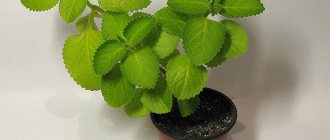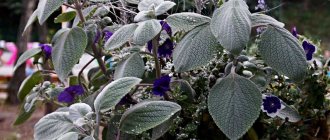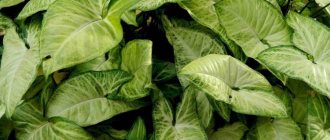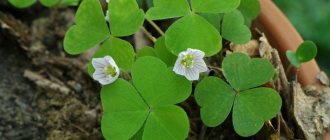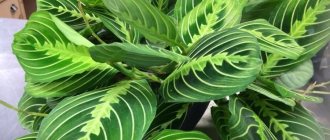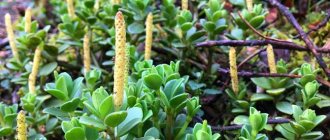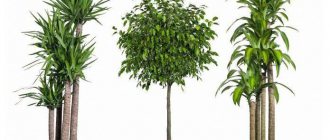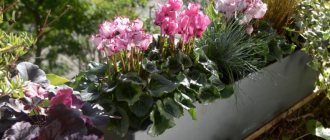Mint is an aromatic plant that is widely used in cooking, cosmetology and medicine. Its extraordinary smell adds freshness to dishes, and mint tea also has a calming effect. But there are other plants that look very similar to mint and are often confused due to inexperience. These plants are lemon balm and catnip. How to distinguish mint from other plants? There are several ways, which will be discussed below.
general information
In nature, plectranthus is common in Asia, Africa and Australia, but it has long taken root well in our latitudes. It is also popularly called spur flower because of the specific shape of the corolla. Indoors, plectranthus blooms towards the end of winter.
Due to its characteristic aroma, plectranthus is often called homemade mint. Despite the fact that this is a flowering plant, it is valued primarily for its beautiful leaves, which form a lush and spectacular crown.
The height of the bush in indoor conditions rarely exceeds 80 cm, and usually it is even less. Plectranthus is very branched, with strong fibrous roots and ribbed shoots. But the leaves are completely different in shape, structure and color.
Photo: zelenj.ru
Transfer
Potted mint is replanted annually. Bushes older than 5 years can be replanted every 24 months. The procedure is performed in the spring. You can prepare the soil for replanting yourself using:
- leaf soil;
- a small part of sand;
- turf soil;
- humus soil.
Indoor petunia - care and cultivation at home
The container for planting bushes must be deep so that the root system fits in the pot. The third part of the container is occupied by a drainage layer.
Additional Information! It is unacceptable to carry out replanting work in the summer months. During the hot season, it is difficult for bushes to take root in a new place.
Types of Plectranthus
There are a lot of species of plectranthus in nature, but not all of them are suitable for indoor growing or landscaping in the middle zone. Let's look at the most common ones in our latitudes!
Coleus plectranthus
Under favorable conditions, this neat evergreen shrub grows up to 1 m. Its strong, pubescent shoots are decorated with a purple color, and the leaves seem to be covered with a bluish coating.
Photo: pchelkinastrana.ru
Plectranthus Forstera
It is also sometimes called Indian, and is notable for its long and almost creeping shoots. In summer it is densely covered with small white flowers up to 1.5 cm in diameter.
Photo: davesgarden.com
Shrub plectranthus
This is a fairly tall herbaceous species, which sometimes grows to a full-fledged shrub. The leaves are very fragrant, with a beautiful ovoid shape. By the way, on the farm it is used to repel moths.
Photo: gallery.forum-grad.ru
Plectranthus Ertendahl
It has spectacular rounded leaf plates with an openwork figured edge and light veins. But this variety needs an increased amount of fertilizing for flowering.
Photo: pestik-tychinka.ru
Felt plectranthus
It was so named for the distinct edge on its wide, ovate leaves. This is a medium-sized shrub, up to 75 cm, and an interesting light green shade.
Photo: harrowphotos.com
Southern plectranthus
Beautiful creeping appearance with long petioles. They are glossy, without pubescence, but as if rubbed with wax. This plectranthus grows well as a hanging plant and has almost no smell.
Photo: pinterest.com
Hamedorea (50 photos): types, cultivation and care at home
Mint and lemon balm - how to distinguish plants
In summer cottages and near private estates, aromatic plants such as mint and lemon balm are often found.
Most people have probably brewed them as tea more than once, but you can’t always be sure which plant is in front of you. They have a similar appearance and aroma, which is why confusion arises.
This article will tell you how to distinguish mint from lemon balm and what the characteristic features of each plant are.
Are mint and lemon balm the same thing?
To better understand the differences between these two plants, let's turn to botany. Mint is a genus of plants of the Lamiaceae family, all species of which have a strong aroma, and many of them also contain a large amount of menthol.
Did you know? The name of the genus comes from the name of the nymph Minta, the goddess of Mount Mente, which is located in Elis.
According to legend, she was the beloved of the god of the underworld Hades, for which his wife turned the nymph into a plant.
Melissa officinalis is a perennial essential oil herbaceous plant, which, like mint, belongs to the Yamnotaceae family, only it has a different genus - Melissa.
Melissa and mint have significant differences in other characteristics, so we can say with confidence that these are different plants, although it is often believed that mint is lemon balm.
How to distinguish mint and lemon balm by appearance
If you look carefully at both plants, you will probably notice that they have differences in appearance. Mint has a straight stem, and purple flowers are collected in inflorescences that resemble ears.
The plant does not grow higher than one meter, although in most cases it is even lower (up to 30 cm). The leaves are mostly oval, but can also have a lanceolate shape with a pointed end. The roots are thin, fibrous.
: How to grow strawberries from seeds: country tricks
Fruiting in mint is quite rare, but if you are lucky enough to see mint fruit, it will be slightly rough and may have hairs at the top. It contains four small nuts inside.
In lemon balm, the stem branches (has hairs on the surface), and the flowers are collected in false rings (6-12 pieces in each) and are painted in purple tones. The maximum height of the plant reaches 1.5 meters, although it is usually somewhat lower. The leaves, like the fruit, are characterized by an oval (ovoid) shape.
Did you know? According to popular belief, mint can prolong human life, which is why in ancient times it could be found near almost every home.
Is the smell of lemon balm and mint different?
Perhaps the most characteristic difference between mint and lemon balm is the smell. Mint has pronounced aphrodisiac properties and is distinguished by a refreshing menthol aroma.
Melissa is also characterized by a pleasant smell, but not so rich, with a predominance of light lemon notes. This plant is a large honey plant, so it is well suited for growing near apiaries.
The difference between mint and lemon balm in terms of aromatic properties is more noticeable than when visually examining the plants, which is why many summer residents distinguish them only thanks to this nuance.
Significant difference in chemical composition and properties
It is no secret that mint has an excellent tonic effect, and lemon balm has a good calming effect, which is largely explained by their chemical composition. Thus, mint contains a large amount of essential oils, and is also high in saturated acids (0.246 g), fats (0.94 g) and dietary fiber (8 g).
In addition, the plant contains many vitamins: A, B1, B2, B3, B6, B9, C, PP, and among the minerals there are copper, manganese, calcium, phosphorus, magnesium, zinc, iron, potassium and sodium.
Thanks to this composition, the difference between lemon balm and mint is also the analgesic effect of the latter, as well as its anti-inflammatory, diuretic and choleretic properties.
The chemical composition of lemon balm is in many ways similar to that of mint. Of course, it does not contain fatty acids and dietary fiber, but it consists of the same vitamins and minerals, only in a different concentration. Melissa contains vitamins A, B1, B2, B6, B9 and vitamin C, as well as the already mentioned copper, zinc, phosphorus, sodium, manganese, calcium, potassium, magnesium, iron.
What plants are similar to mint?
So, we have already found out how lemon balm differs from mint in terms of appearance and chemical properties, but this does not mean that you will not confuse these plants with others similar to them.
If we take into account only the external similarity and do not take into account the aromatic qualities, then dead nettle (white nettle) and some other representatives of the Yamnotaceae family are very similar to mint: creeping tenacious, European sage, common dubrovnik, common odoriferous, common blackhead and catnip. Important! Most mints are hardy plants that grow very well, so there's a good chance you'll see mint in parts of the garden where you didn't plant it.
Moreover, mint itself also has many varieties, the most common of which are:
- pepper (most often bred for use in cooking, medicine or for household purposes);
- curly (characterized by a delicate aroma and the absence of a sharp cooling taste);
- Japanese (distinguished by rather large purple flowers);
- long-leaved (grown on plantations to obtain essential oil);
- meadow (presented in the form of a wild plant, which most often grows throughout the entire site);
- catnip or catnip (the most attractive species for cats, which, like lemon balm, has a slight lemon smell).
Some gardeners often confuse lemon balm and catnip, but in fact, these two plants have significant differences. First of all, the chemical composition of the oils and their quantity cannot be called the same, although the aroma of this plant is very reminiscent of lemon balm. The growing area of these plants also differs.
While catnip is more often found in the forest-steppe zone, in the Crimea, the Caucasus or the Far East, mint and lemon balm prefer the southern regions.
Important! Lemon balm is often called lemongrass or lemon balm, but as for the latter name, it is not entirely correct, since mint itself is considered a completely different plant, although it belongs to the same family.
Be that as it may, both mint and lemon balm have very useful properties that have a wide range of applications not only in everyday life, but also in cosmetology and medicine. Herbal teas containing these plants can both improve the tone of the whole body and have a relaxing effect after a hard day at work.
: Planting plan along the fence at the dacha
Source: https://sampit.ru/myata-i-melissa-kak-otlichit-rasteniya/
Plectranthus care
Plectranthus is one of those universal favorites that do not require any special conditions or care. Lighting and regular watering – that’s all the unassuming plant needs!
Temperature
Room temperature is good throughout the year. In summer, 20-25 degrees are ideal for it, and in winter the plant lives well at 14-15. Do not lower the temperature below 12 degrees.
Photo: master-eduard.ru
Lighting
Delicate decorative leaves do not tolerate the scorching sun and may become burned. Therefore, plectranthus prefers diffused light and will grow well even in partial shade. No additional lighting is needed.
Photo: zemeljka.ru
Watering
For plectranthus, frequent and abundant watering is important, but at the same time, the top layer of soil must dry out. In the heat and winter during the heating season, periodically spray the plant with warm water.
Photo: komnatnyecvety.ru
The soil
Choose a nutrient substrate based on leaf soil and sand. Due to abundant watering, a very thick drainage layer is needed - it can occupy up to a third of the flowerpot. Take the pot itself deeper to accommodate the developed rhizome.
Photo: flori-da.ru
Fertilizers and fertilizing
Feeding is practically not needed. During the growth period, feed it with a mineral complex for deciduous plants. Once every 2-3 weeks is enough, and at other times there is no need even for this.
Photo: pinterest.es
Trimming
In order for plectranthus to bush beautifully, it needs to be periodically pruned and pinched. In the spring, at the beginning of the season, the shoots are shortened by half, and later in the process they are pinched as needed. If this is not done, the shoots will stretch and become bare.
Photo: pestik-tychinka.ru
Transfer
During the first years, plectranthus is replanted every spring, choosing a pot slightly larger than the previous one. In the future, rare transplants will suffice as needed, but it is better not to disturb the plant at all. During transplantation, the bush can be carefully divided into several parts.
Photo: serissa.ru
Date palm (50 photos): types, care and cultivation at home
Trimming
Plectranthus: home care and main types
To maintain an attractive appearance of the crop, it is necessary to systematically prune. As a rule, this procedure is performed in the spring. Each of the shoots of plectranthus is shortened by half. During the period of active growth, experts advise pinching the tips of the shoots, which helps stimulate branching.
How does plectranthus reproduce?
Indoor mint can be propagated using the following method:
- cuttings;
- dividing bushes.
To use the second method, you will need to dig up a bush and, using a sharp shovel, divide it into a couple of parts so that the root system and shoots remain on each side. The resulting parts of the plant are planted in pre-prepared holes. It is necessary to shade the seedlings from direct sunlight, which will make it possible to avoid burns of the leaf plates.
To propagate by cuttings, you will need to cut stem branches from the mother bush, the length of which has reached 5 cm. For rooting, you should place the cuttings in a container filled with water. A few weeks after the roots have formed on the branches, they are planted in separate containers filled with humus, leaf and turf soil.
Reproduction by dividing the bush
Pest and disease control
Plectranthus has good immunity, so it almost never gets sick. But with high humidity and low temperatures, even he suffers from fungal diseases. In this case, it is necessary to treat the bush with fungicides and adjust the regime. Affected shoots will have to be removed immediately.
The persistent aroma of plectranthus repels pests. It is very rare to see aphids, mites or scale insects on it. It is usually sufficient to gently wash the leaves with soapy water. If there are a lot of insects, use protective drugs!
Photo: missouribotanicalgarden.org
Epipremnum (50 photos): types, cultivation and care at home
Plectranthus – photo
The plectranthus genus is so diverse that you can find more than a dozen varieties that are completely different from each other. Just look how beautiful it is!
Photo: flowersweb.info
Photo: greenboom.ru
Photo: rastenievod.com
Photo: leplants.ru
Photo: commons.wikimedia.org
Photo: na-dache.pro
Photo: samson-school.ru
Photo: uz.crushingplants.info
Photo: alternativeeden.com
Photo: m.alibaba.com
Photo: water-vao.ru
Photo: youtube.com
Photo: pelargoniumpl.blogspot.com
Photo: komnatnyecvety.ru
Photo: nuestraflora.com
Photo: houseplants.studleys.com
Photo: commons.m.wikimedia.org
Photo: ru.m.wikipedia.org
Photo: ethno2.ethno-botanik.org
Photo: pixabay.com
Photo: shop.zelmir.by
Photo: sortved.ru
Photo: uz.crushingplants.info
Photo: glav-dacha.ru
Photo: zen.yandex.ru
Did you like the post? Subscribe to our channel in Yandex.Zen, it really helps us in our development!
